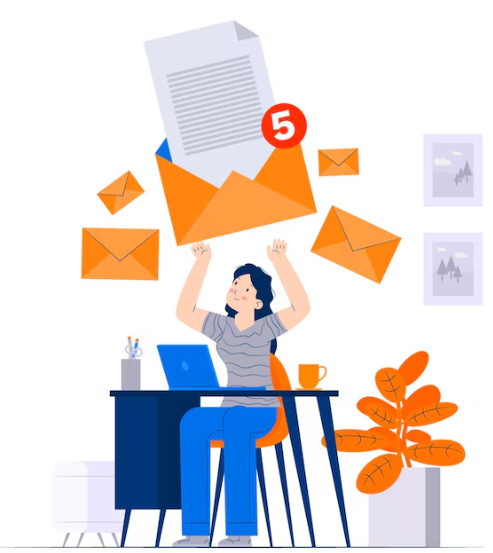Cold emailing can be a powerful tool for reaching potential clients, networking, and building relationships. However, many businesses struggle to make their cold email campaigns effective due to common pitfalls. In this blog, we’ll explore ten common mistakes in cold email campaigns and provide actionable solutions to help you avoid them.
1. Lack of Personalisation
Mistake: One of the most significant errors in cold emailing is sending generic messages that lack personalization. When emails feel mass-produced, recipients are less likely to engage.
Solution: Take the time to personalise each email. Start with the recipient’s name and reference specific details about their company or recent achievements. Tools like LinkedIn can provide valuable insights for crafting personalised messages. For example, instead of starting with “Dear Sir/Madam,” use “Hi [Recipient’s Name], I noticed your recent project on [specific detail].”
2. Weak Subject Lines
Mistake: A bland or misleading subject line can lead to low open rates. If the subject line doesn’t grab attention, your email may end up in the trash.
Solution: Craft compelling subject lines that spark curiosity or highlight a benefit. A/B testing different subject lines can help you determine what resonates with your audience. For instance, instead of “Our Services,” try “How We Helped [Similar Company] Increase Their Revenue by 30%.”
3. Too Much Information
Mistake: Overloading your email with information can overwhelm recipients. Long paragraphs and excessive details can lead to disengagement.
Solution: Keep your email concise and focused. Use bullet points or numbered lists to present key information clearly. Aim to communicate your message in three to five short paragraphs. Remember, the goal is to pique interest, not provide every detail upfront.
4. Neglecting a Clear Call to Action (CTA)
Mistake: Failing to include a clear CTA can leave recipients unsure of what to do next. Without direction, your email may not lead to any meaningful response.
Solution: Include a specific and actionable CTA that guides the recipient on what to do next. Whether it’s scheduling a call, signing up for a webinar, or replying to your email, make it clear and straightforward. For example, “Would you be available for a 15-minute call next week to discuss how we can help?”
5. Sending at the Wrong Time
Mistake: Timing can significantly impact the success of your cold email. Sending emails at inconvenient times may lead to low open rates.
Solution: Research the best times to send emails in your target market. Generally, Tuesday to Thursday mornings yield the best results. Use tools to schedule your emails to ensure they reach inboxes at optimal times.
6. Ignoring Mobile Optimization
Mistake: Many people read emails on their mobile devices. If your email isn’t optimized for mobile viewing, you risk losing potential leads.
Solution: Ensure your email design is mobile-friendly. Use a single-column layout, large fonts, and buttons that are easy to click. Test your emails on various devices to ensure they display correctly.
7. Failing to Follow Up
Mistake: Many senders give up after one email, missing out on potential opportunities. Research shows that multiple touchpoints can significantly increase response rates.
Solution: Implement a follow-up strategy. After your initial email, send a polite follow-up within a week if you don’t receive a response. Keep it brief, reiterate your value proposition, and include a new CTA. For example, “I wanted to check in to see if you had a chance to review my previous email.”
8. Not Researching the Recipient
Mistake: Sending emails without understanding your recipient’s needs can lead to irrelevant messaging. This approach often results in low engagement.
Solution: Conduct research on your prospects before reaching out. Understand their business challenges and tailor your message to address their specific needs. Mention how your solution can help solve a problem they may face.
9. Using Jargon or Complex Language
Mistake: Using industry jargon or complex language can alienate recipients who may not be familiar with specific terms. This mistake often leads to miscommunication.
Solution: Write in clear, straightforward language that is easy to understand. Avoid jargon unless you are confident the recipient will understand it. Aim for a conversational tone that feels approachable.
10. Neglecting to Test and Analyze Campaigns
Mistake: Many marketers send cold emails without tracking their performance. Without analysis, it’s challenging to improve future campaigns.
Solution: Use email marketing tools to track open rates, click-through rates, and responses. Analyze the data to identify patterns and areas for improvement. Regularly test different elements of your emails, such as subject lines and CTAs, to refine your approach over time.
Conclusion
Cold emailing can be a highly effective strategy when done correctly. By avoiding these common mistakes and implementing the suggested solutions, you can enhance your cold email campaigns and increase engagement with your target audience. Remember, the key is to personalize your approach, provide value, and maintain a clear focus on your goals. Start applyivng these tips today, and watch your cold email success rates soar!


Leave a Reply